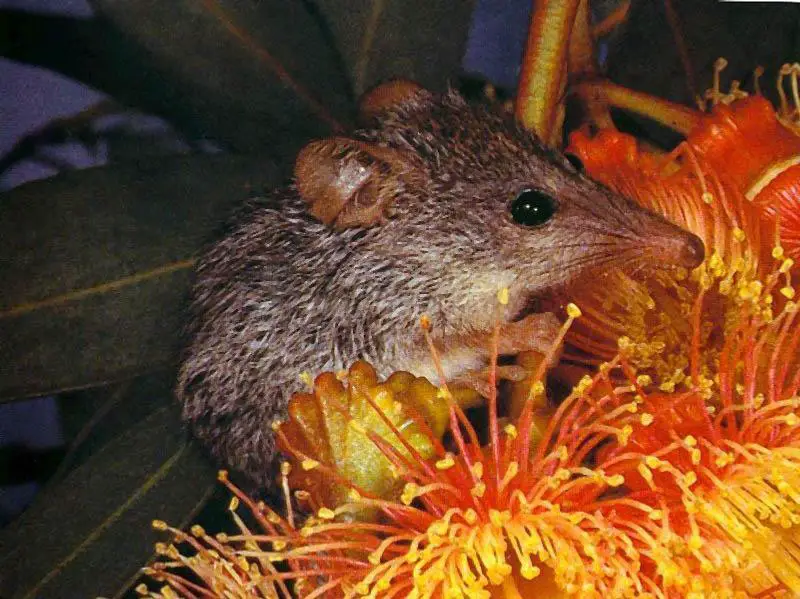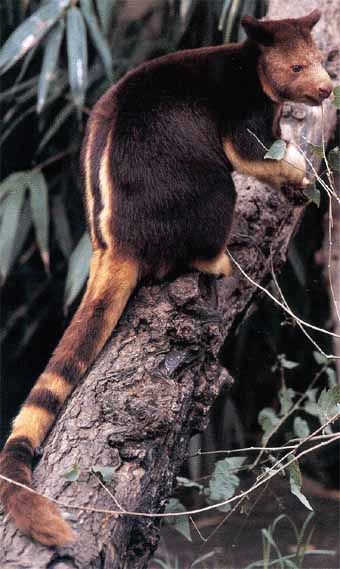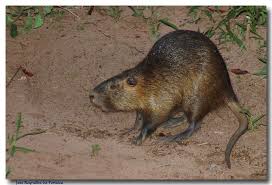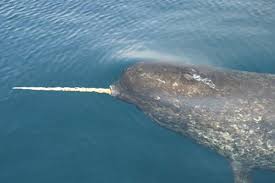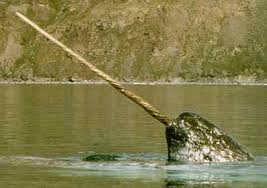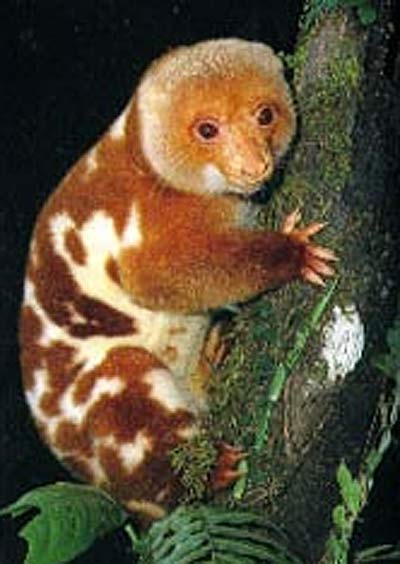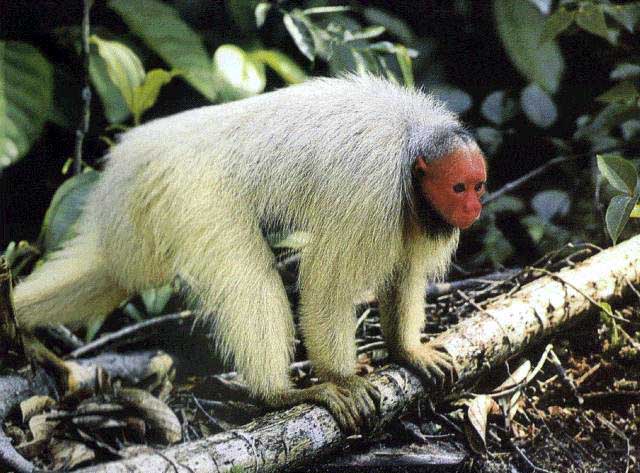The honey possum (Tarsipes rostratus) is a species of marsupial found in Australia. They are very small mammals and are also known as the noolbenger.
Physical Features
The honey possum is a tiny, mouse-like marsupial weighing 6 to 17 grams. Males are smaller than females. They measure about 10 cm while their tail is longer, measuring 11 cm. Their fur is grayish-brown in color and is marked with three stripes along its back. The honey possum has long fingers with rounded tips and very short nails. Females have 4 teats in their well developed pouch. Honey possums have long, prehensile tails with hooked tips. They have long snouts
Diet Honey possum feeding
The honey possum is a herbivore, feeding on pollen grains and nectar with the help of their long snout.
Distribution and Habitat
The honey possum is mainly found in the south-western parts of Western Australia. The live in trees and shrubs.
Behavior
The honey possum is active at night, making it a nocturnal. They live in groups and often go torpid during cold weathers. They are very agile on trees and are excellent climbers. They do not make much noise unless mating. Honey possums spend the day sleeping in hiding places between plants.
Life Cycle
Females give birth to about 2 young at any time of the year after a gestation period of 28 days. It takes 2 months for the development of the young in the womb. The young leaves the pouch of the mother at an age of 6 weeks at most. The young is weaned at an age of 10 weeks. Honey possums mature at the age of 10 months, having a life span of about 1 year.
Conservation Status
The honey possum is not considered to be threatened but is under the risk of habitat loss. Their population is unknown. Honey possums are very common.
Source of picture 1:http://board.muse.mu/showthread.php?t=20328&page=318
Source of picture 2:http://www.itsnature.org/trees/mammals-trees/honey-possum/

